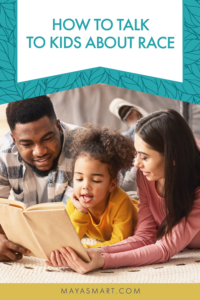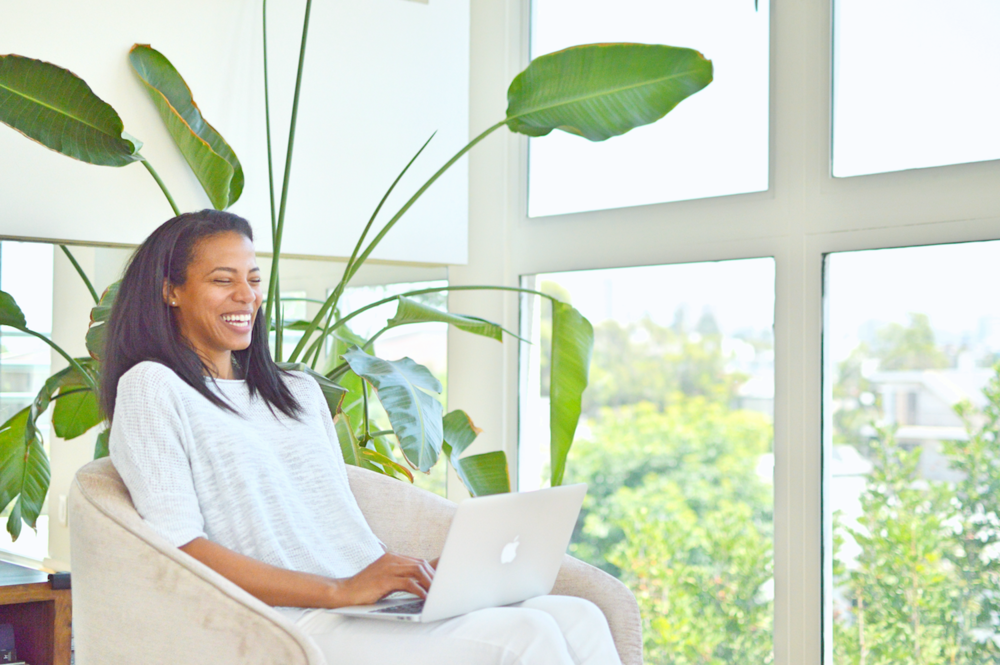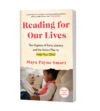Kelli Mason, a mom of two and the vice president of diversity, equity, and inclusion at Notley, a social impact investment firm, has labored for years in the notoriously reactive workplace diversity space. But her latest project, Ripple Reads, looks upstream to address racism before it takes root in the next generation. The monthly family newsletter she founded aims to get parents and their little ones excited to stand up for racial justice.
“If we can reach kids proactively and get families to get comfortable having honest conversations about race, then we might be able to actually move the needle, and work ourselves out of business in the workplace inclusion world,” she says. “We’ll help raise this generation of kids to become adults who don’t need to be educated on race, racial justice, and racial awareness.”
The publication offers in-home antiracist parenting curriculum for discussing race with children, developed by Dr. Keffrelyn Brown and Dr. Anthony Brown of the Center for Innovation in Race, Teaching, and Curriculum at the University of Texas. More than offering mere talking points, the curriculum provides book recommendations, discussion guides, activities, and other content aimed at planting antiracist principles into the hearts of families. And starting in 2021, it’s entirely free, so everyone can be equipped to have frank family discussions about race with elementary school-aged kids.
What inspired you to start Ripple Reads?
So really, it was over summer of 2020, when George Floyd was murdered, and there was this national and, really, global recognition that we are not where we think we should be as a society when it comes to race. A lot of parents [were] reaching out and saying, “Our kids are hearing about this in the news. Our kids know that something’s going on. They’re seeing Black Lives Matter signs pop up around the neighborhood. How do we engage them in a way that is age-appropriate?”
And we loved that challenge. Being in this workplace diversity and inclusion and racial justice space, a lot of it is reactive. It’s if someone did something bad at work and they said something wrong, and now we need to figure out how to make it right. It’s dealing with adults who are very hard to change, if you’ve got these deeply ingrained biases.
What reactions have you gotten from parents? And have you been surprised by anything?
I have been surprised by how voracious kids are for this conversation. So many people have been like, “Oh my gosh, my kids can’t wait to have these discussions and they just want to ask question and question and question.” I think that there are a lot of people who—race was kind of a taboo, particularly white families, more like you never talked about it. But kids see it, and now they’re like, “Oh my gosh, I can talk about it? Wow, that’s exciting.”
Another one that’s come up is for black families. It’s something interesting I’ve talked with Dr. Keffrelyn Brown about a lot. They’re like, “This is scary. This could be scary for my kids. Right now my kids are in this bubble and they don’t know that police can do these horrible things, and I want to keep them in that bubble.”
The feedback I got from Keffrelyn is that talking about race and racism can help kids of color, black kids in particular, build up this resilience and this awareness to say, “Oh, when these things are happening outside in the world, it’s not personal. It’s not about me. It’s about the systemic structures that have been in place for hundreds of years.” And, “That’s their problem and they need to figure that out. I’m not the problem.” So I thought that was an interesting approach.
And how has your approach to parenting or your reflections on how you were parented been affected by these experiences?
It’s funny, because my dad read my little bio about why I started Ripple Reads on the website and he was like, “I didn’t know you felt that way.”
I had a black mom and a white dad, and they really were like, “Color doesn’t matter. You can do anything you want.” Just very, rah, rah, color blind, we don’t see color.
And as I’ve gotten older, I’m like, wait. When we don’t acknowledge that color is there, as kids it’s easy to start telling yourself these stories, like, “Well, if color doesn’t matter and this isn’t a thing, then why are all the people on the rich side of town white and all the people on the poor side of town or the homeless people black?”
And so you start creating these stories like, “Well, they must have some personal shortcoming that has led them there.” You lose the bigger picture that systemic racism is a thing and it still exists. We’re still dealing with the consequences of it every day.
And again, back to what Keffrelyn said, it takes the personal out of it, right? It’s not that for whatever reason, black people aren’t deserving of nicer homes or whatever. No, actually, there’s been an exposé in Long Island, just a few years ago, that real estate agents today are still steering black people to certain neighborhoods and white people to certain neighborhoods.
And there was this couple, also a biracial couple, a black woman and a white man. The woman got the home appraised and the husband was like, “No, no. Our home should be appraised much more than this.” He sends her away. He’s like, “You go. I’m going to talk to the appraiser and stuff,” took down all of their family photos so that the appraiser didn’t know that this was a biracial family, got the house appraised for $100,000 more.
There’s all of these things that are still going on today. So I think it’s important that we have these conversations, and that was kind of what was lacking in my own upbringing, this, “What is the bigger picture? What systemic things are going on in it?”
These are definitely things I’ll do differently with my kids.
In doing a project like this, you have to have a certain level of optimism that personal conversations can lead to systemic, larger, bigger, sea-change kind of transformation. Is conversation enough? What else do you think people need to do?
We always include activities, because conversation is kind of the first step. And I love this quote from Angela Davis: “In a racist society, it’s not enough to be non-racist. You have to be antiracist.” I think that the conversations, they’re enough to say, “Hey, we can be non-racist.” But then with the activities and the content that we put around it, it’s, “How can you take that next step?”
We had, in the September issue, [an activity]: If your kid comes home and they’re like, “Oh, someone called someone the N-word on the playground.” I think a lot of parents, regardless of your background, might be like, “That wasn’t nice,” “Don’t play with that kid anymore,” “We’re not inviting that kid over to our house.”
And that’s great. You’re not participating and you’re not the one calling somebody this. But the next step is, go talk to the teacher, talk to the kid’s parents, talk to the principal, whatever makes sense. Take that next step to show your kids that we’re not just not a racist family. We’re not just a family that is passively, “Oh, that’s not good. We don’t do that.” We’re a family that takes action.
I think once there are enough families that are having this conversation and then taking that action and feeling empowered to speak up, that’s when the systems can change. That’s the hope.
Have you gotten any indications or feedback yet from families that are taking action, or do you think people are in a stage of still taking it all in and having the conversations privately at home?
We’ve had a few. People will send in pictures. One of the activities we had was to do a Black Lives Matter sign and you could put it in your window. The kids are getting involved and they’re creating this thing.
With the act of creating, they’re feeling ownership over it. So we have some pictures of their kids doing that and pictures of the signs up in their windows.
Have I heard anyone talk to a principal or make systemic change yet? I know it’s still early, but hopefully so, right? I think these are the stepping stones, the building blocks, so that you feel comfortable in that place, because it’s become your identity.
I think that’s what we want. We want families to have this identity of “we’re going to take action,” so that when rubber hits the road and there’s an opportunity to take the action, you’re going to do it.



